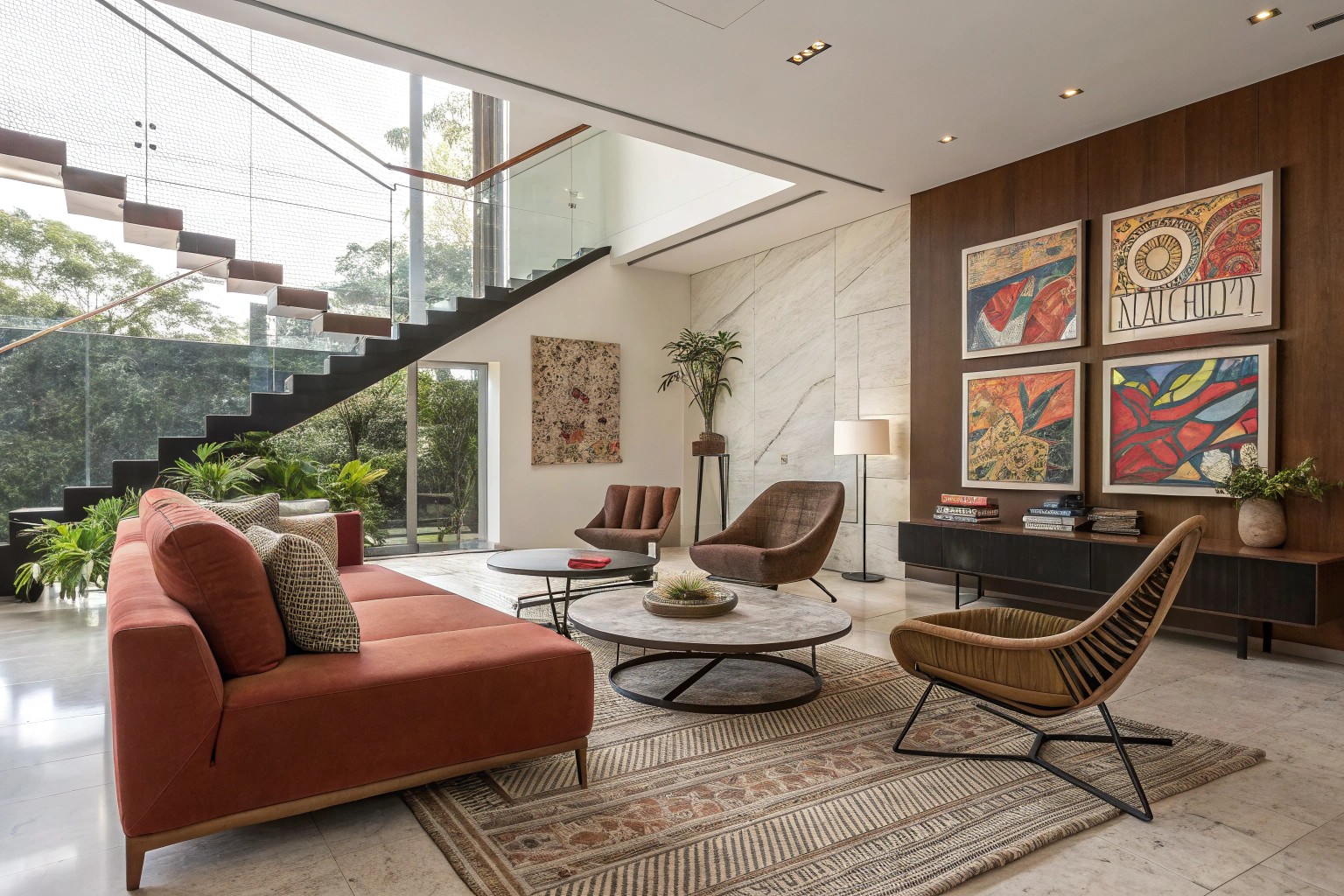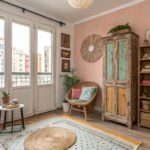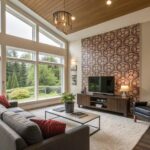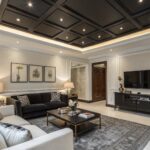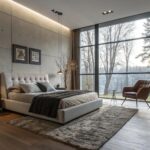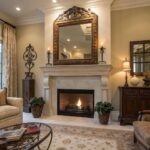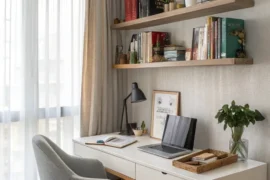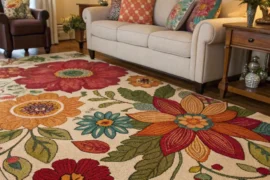As I walk through beautiful interiors across the country, one design principle consistently elevates ordinary spaces to extraordinary ones: asymmetrical balance. Unlike the predictable mirror-image approach of symmetrical design, asymmetrical balance creates dynamic, personalized spaces that feel both harmonious and unexpectedly refreshing. This guide will help you master this subtle yet powerful design technique that can transform your home from predictably perfect to perfectly imperfect.
Understanding Asymmetrical Balance in Interior Design
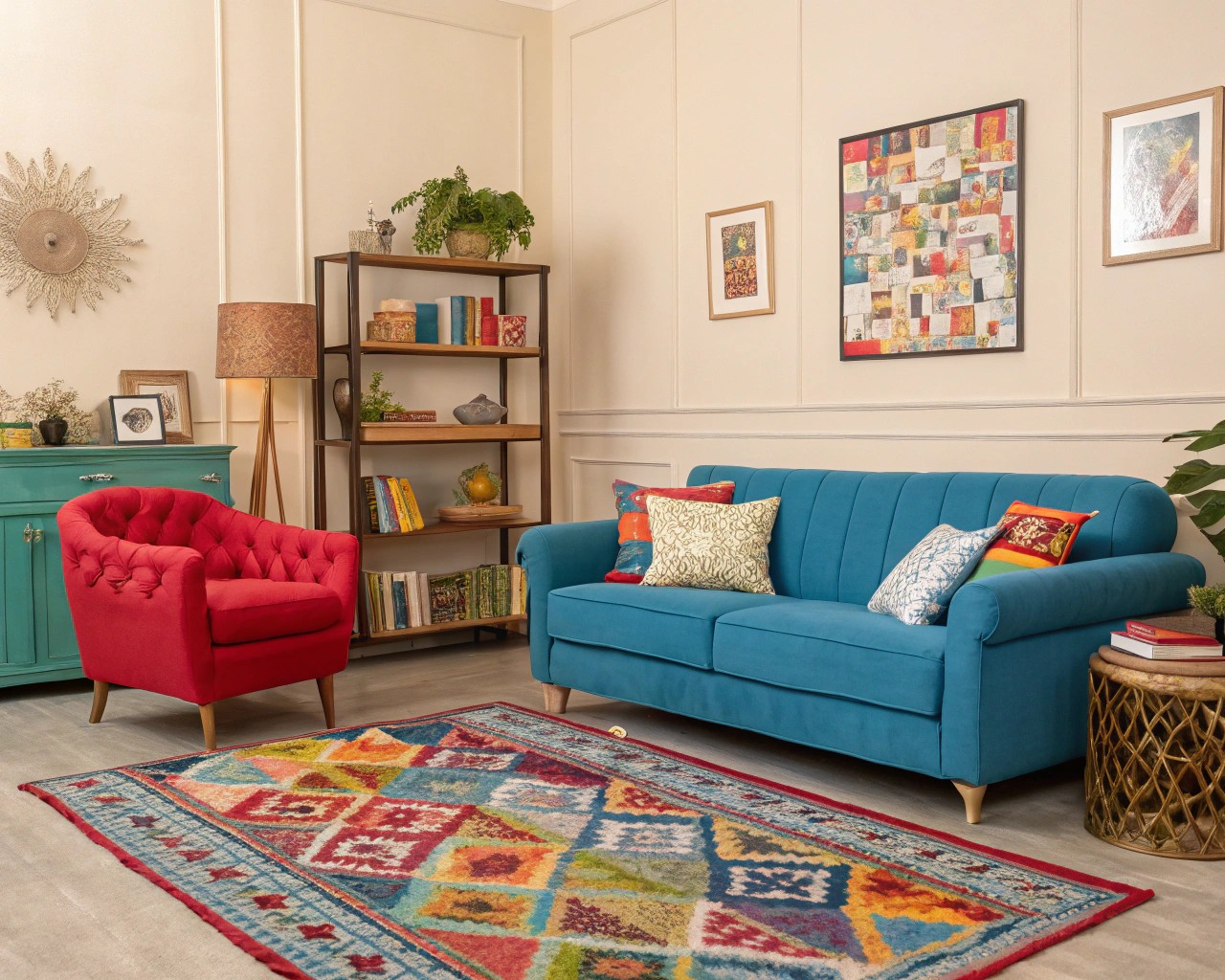
Asymmetrical balance involves creating visual equilibrium using elements with varying visual weights without relying on mirroring or exact duplication. This approach creates spaces that feel more dynamic and imaginative than strictly symmetrical ones.
Visual weight refers to how much an object draws the eye—determined by factors like size, color, texture, and complexity. A large, dark-colored sofa has more visual weight than a small, light-colored accent chair. The key is arranging these objects so their visual weights complement each other, even when they’re not identical.
After fifteen years in this field, I’ve observed that clients initially hesitate about asymmetrical designs but inevitably appreciate how they bring life and personality to their spaces. Where symmetry offers predictability, asymmetry invites imagination.
Benefits vs. Drawbacks of Asymmetrical Design

| Benefits | Drawbacks |
|---|---|
| Creates visual interest and movement | Requires more thoughtful planning |
| Allows greater creative expression | Can feel disjointed if poorly executed |
| Feels more natural and less contrived | May not suit highly formal aesthetics |
| Introduces unexpected elements that engage viewers | Might intimidate those accustomed to symmetry |
| Offers flexibility for challenging spaces | Requires understanding of visual weight |
Principles for Creating Asymmetrical Balance
Understanding Visual Weight
When I approach an asymmetrically balanced room, I first consider how elements will distribute visual weight. Here’s how different elements affect visual weight:
- Size and Scale: Larger objects naturally carry more visual weight
- Color and Value: Darker colors appear heavier than lighter ones
- Texture and Pattern: Complex textures and patterns increase visual weight
- Density: Solid items appear heavier than transparent ones
- Position: Objects placed farther from the center need more visual weight to maintain balance
Establishing Focal Points
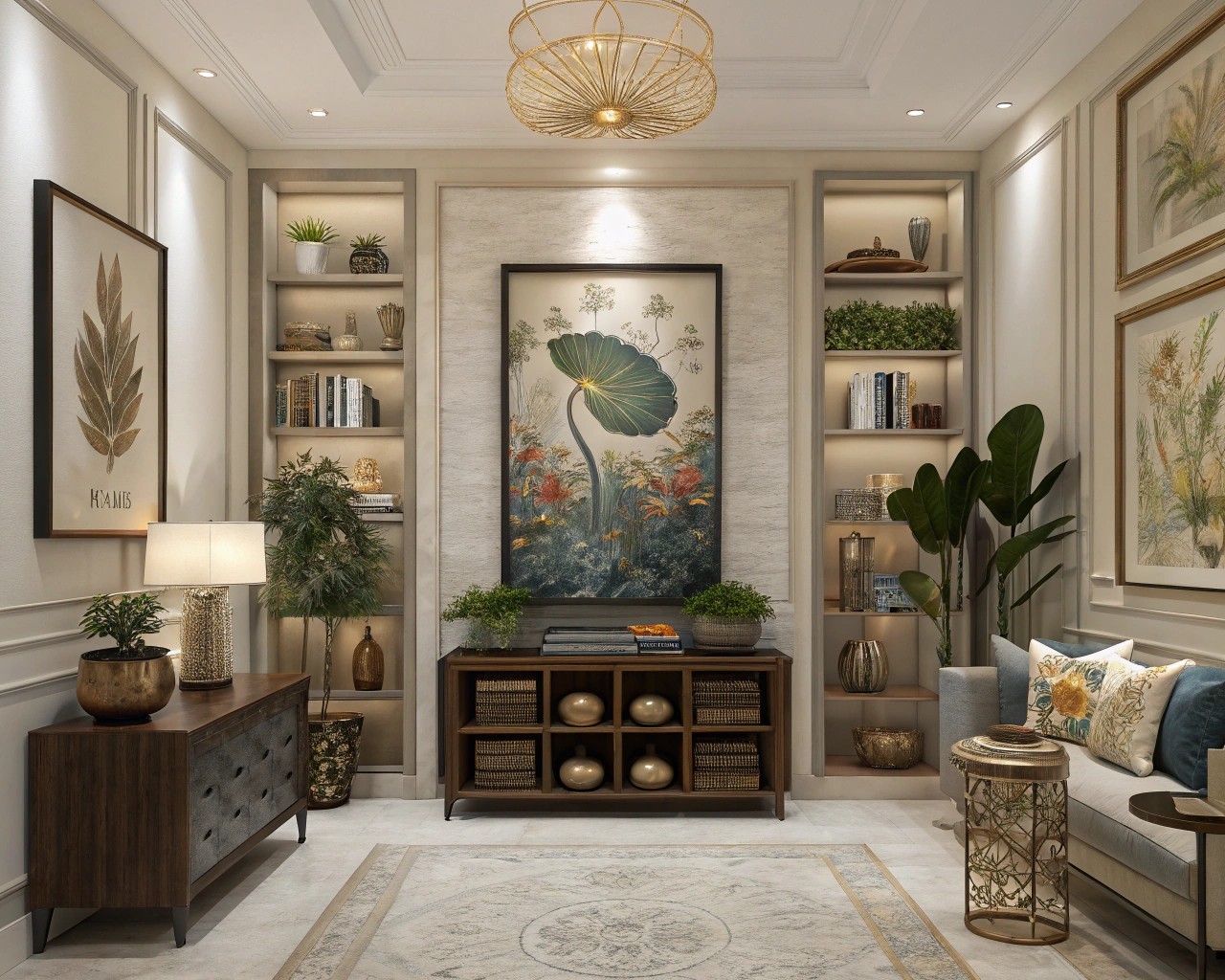
One of my favorite techniques is using a bold piece of artwork as a centerpiece, then arranging mismatched decor around it to draw the eye naturally across the room. Focal points serve as anchors in asymmetrical design, giving the eye a place to rest before exploring the dynamic elements around them.
Practical Techniques for Achieving Asymmetrical Balance
Furniture Placement Strategies
In modern room design, furniture arrangement is crucial for successful asymmetry. Instead of matching pairs, try these approaches:
- Pair a larger sofa with smaller accent chairs, placed off-center, to create visual interest and movement
- Balance a large sectional on one side with a mismatched set of modern armchairs on the opposite side
- Use a central focal point (like a coffee table or fireplace) to organize differently sized furniture around it
“When I designed a living space for a client in San Francisco, we balanced their oversized charcoal sectional with three smaller amber chairs and a tall bookcase. The arrangement initially seemed odd on paper, but in execution, it created a perfect conversation area with fantastic energy.”
The Power of Odd Numbers
The “rule of three” is one design principle I live by—grouping objects in odd numbers creates a more visually appealing and balanced arrangement. Odd numbers introduce asymmetry and prevent the eye from settling on a static pattern. When styling shelves or coffee tables, try these combinations:
- Three varied-height vases in complementary colors
- Five framed photos of different sizes arranged in a loose cluster
- Three sculptural elements with contrasting textures
Mastering Wall Decor and Art Arrangement
Gallery walls offer excellent opportunities for asymmetrical design. Instead of perfectly aligned rows:
- Mix different-sized frames and artwork types
- Vary spacing between pieces
- Balance a large statement piece with several smaller ones
- Extend the arrangement in an organic pattern
- Use color repetition to create cohesion despite asymmetry
Room-by-Room Applications
Living Rooms: Dynamic Conversation Spaces
The living room presents perhaps the best opportunity for asymmetrical design. Consider this case study:
In a recent project facing an off-center fireplace, we created balance by placing a large sectional sofa on one side and balancing it with a richly-colored chair and two ottomans on the other. This not only solved the practical challenges of the space but created a more interesting visual narrative than forcing symmetry would have.
For your own living room:
- Use large furniture as anchors, then balance with smaller pieces of stronger visual weight
- Consider placing your sofa off-center and balancing with plants, floor lamps, or accent furniture
- Create asymmetrical but balanced lighting schemes with varied fixtures
Bedrooms: Peaceful Asymmetry
We spend a third of our lives in our bedrooms, where the temptation for symmetry (especially with nightstands) is strong. However, I’ve found that thoughtful asymmetry can create more interesting spaces:
- Pair differently styled nightstands at complementary heights
- Balance a large headboard with artwork on the opposite wall
- Use lighting fixtures of different scales on either side of the bed
- Create an asymmetrical arrangement of pillows and throws
As an example from my own home, I’ve opted for asymmetry by placing a substantial wooden nightstand on one side of the bed and balancing it with a delicate metal pedestal holding a tall lamp on the other. The contrasting materials generate visual interest, while careful consideration of each piece’s visual weight maintains the overall equilibrium.
Kitchens and Dining Areas: Functional Asymmetry
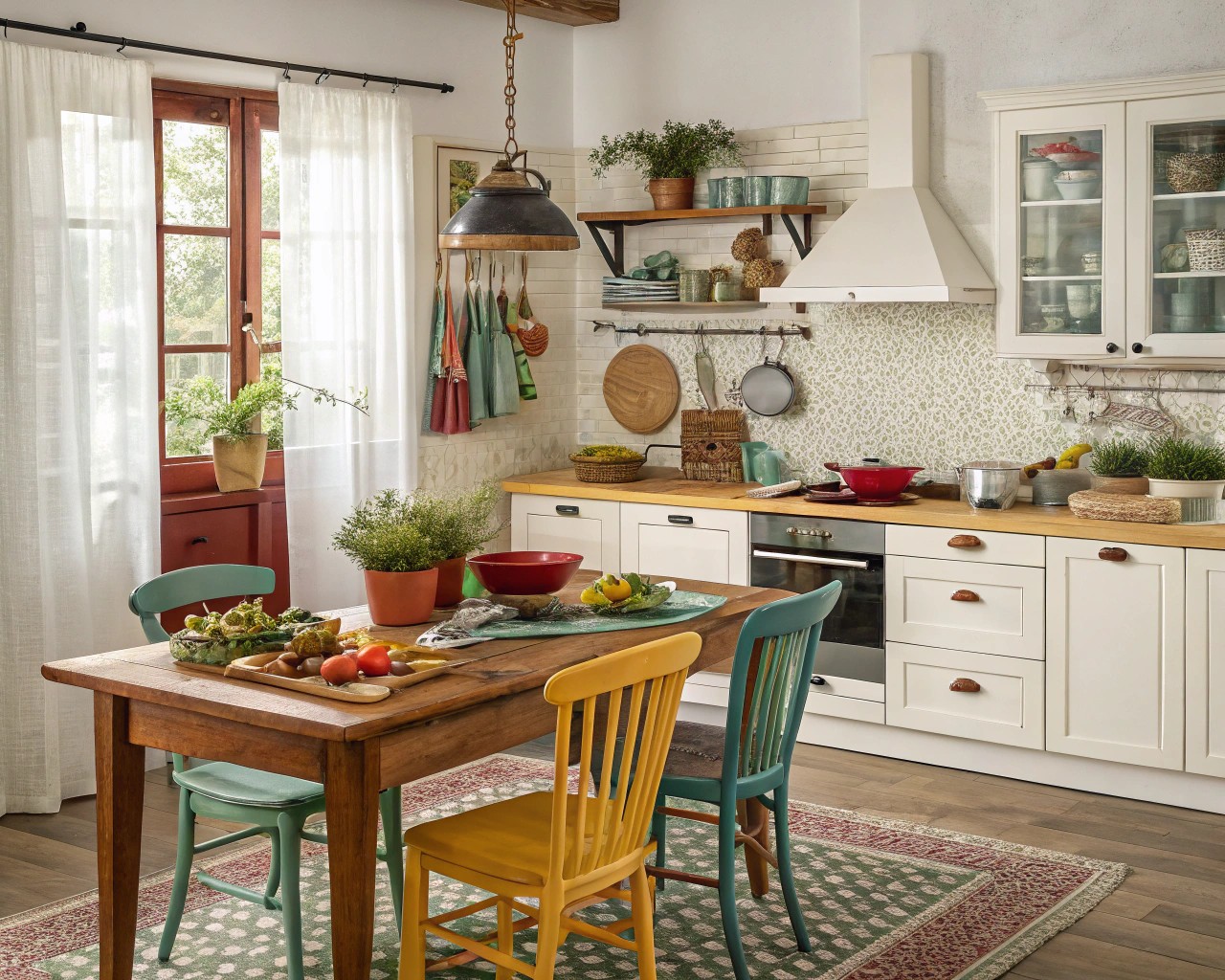
Even in kitchens, where function often dictates design, asymmetry can add character:
- Balance open shelving on one wall with closed cabinetry on another
- Use a kitchen island placed slightly off-center to create dynamic traffic flow
- Mix pendant lights of different sizes above an island or dining table
- Arrange dining chairs of complementary but non-matching styles
Design Styles That Embrace Asymmetry
Different design styles incorporate asymmetry in unique ways:
Wabi-Sabi
This Japanese philosophy celebrates imperfection and finds beauty in natural asymmetry. Incorporating uneven textures, natural materials, and arrangements that evoke tranquility creates authentic spaces that feel lived-in rather than staged.
Mid-Century Modern
With its organic shapes and open floor plans, mid-century modern design frequently incorporates asymmetry to create movement and energy. The clean lines and minimalist approach make this style perfect for experimenting with asymmetrical balance.
Contemporary Design
Contemporary spaces often embrace asymmetry through unexpected architectural elements, mixed media art, and furniture arrangements that prioritize function and flow over strict symmetry.
Creating Asymmetry in Challenging Spaces
Some of my most satisfying projects involved rooms with architectural challenges:
Case Study: The Awkward Window
A client’s living room featured three windows of different sizes on one wall. Instead of fighting this asymmetry, we embraced it by:
1. Using window treatments in a consistent style but varied widths
2. Placing furniture to frame the central window without mirroring arrangements
3. Adding wall decor that complemented the window arrangement without forcing symmetry
Case Study: The Off-Center Fireplace
In an Indianapolis condo remodel, placing the fireplace asymmetrically was necessary due to a new staircase. We restored balance by:
1. Adding richly-colored accent chairs and ottomans to counterbalance the visual weight
2. Using artwork strategically to draw attention across the room
3. Creating a lighting scheme that distributed focus evenly
Common Mistakes to Avoid
In my years of practice, I’ve observed these common missteps when attempting asymmetrical design:
- Confusing asymmetry with messiness: Remember, asymmetry requires thoughtful balance; it’s not about randomly placing items together.
- Neglecting visual anchors: Even asymmetrical spaces need grounding elements
- Overlooking the importance of negative space: Balance includes the empty areas too
- Creating too much weight on one side: This makes rooms feel lopsided
- Forgetting cohesion: Elements should still relate through color, style, or theme
Practical Guides for Different Rooms
Living Room Asymmetrical Balance Checklist:
- [ ] Identify the primary focal point (fireplace, window, TV)
- [ ] Place your largest furniture piece (typically a sofa) in relation to the focal point
- [ ] Balance with smaller pieces of furniture having strong visual weight
- [ ] Create asymmetrical lighting using floor lamps, table lamps, and overhead fixtures
- [ ] Add artwork and accessories at varied heights and scales
- [ ] Step back and assess the visual flow—adjust as needed
Bedroom Asymmetrical Design Tips:
- [ ] Consider an off-center bed placement if the room allows
- [ ] Use nightstands of different styles but complementary heights
- [ ] Balance window treatments with wall art on opposing walls
- [ ] Mix lighting fixtures of varying designs but similar finishes
- [ ] Add a seating area or storage piece to balance a large bed

